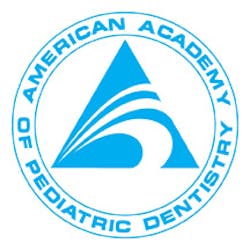American Academy of Pediatic Dentistry offers commentary on Pediatrics journal report
May 30, 2013
3 min read
CHICAGO – May 30, 2013 — The American Academy of Pediatric Dentistry (AAPD), the leading authority on children’s oral health, provided commentary today on the report, Effectiveness of Preventive Dental Visits in Reducing Nonpreventive Dental Visits and Expenditures, by Sen et al, in issue 6, Volume 131, of Pediatrics. According to Paul S. Casamassimo, DDS, MS, and director of the AAPD Pediatric Oral Health Research and Policy Center, “It is important to put the authors’ findings into context in recognition of the inherent limitations of this study.” Although the authors correctly indicate that children covered by Medicaid tend to be at higher risk for dental caries, the report does not recognize that these children may not have access to care or enjoy appropriate preventive services. Medicaid families often face barriers to care ranging from health illiteracy to competing social and economic pressures. The higher risk of dental caries, along with this lack of early preventive care, may result in the first visit being sought in response to existing decay that causes pain. Often, this necessitates restorative treatment at their first visit. Additionally, children with higher risk of caries need an increased number of preventive services, so we would expect that cost to be maximized. Finally, a body of literature speaks to the residual continued disease occurrence in children afflicted early in life with dental caries.RELATED |AAPD evaluates oral health services offered under Medicaid Inherent problems with extrapolating from Medicaid data include: episodic care seeking, enrollment variations, no differentiation of levels of dental caries risk, lumping diagnostic and preventive services together, and the vast unknown of what is not reported or discernible from the data. Additionally, restorative expenditures, as compared to diagnostic and preventive costs, will be very high.RELATED |Starting a nationwide conversation on declining oral health Importantly, consideration of costs must take into account prevention’s effects on the reduction of emergency department visits for tooth pain and also the need for general anesthesia care to treat dental caries. Both the Beil et al. and the Savage et al. reports, cited by the authors, include these “hidden costs,” which can be sizable but are usually found in medical claims data, not dental data. The Pediatrics study does not take into account costs such as emergency room visits and services that must be provided under general anesthesia. Readers should also be aware of the hidden human costs of dental caries, which include the morbidities of chronic pain, impaired learning, lower self-esteem, and compromised nutrition. According to Dr. Warren Brill, AAPD president, “Unfortunately, current data collection limitations and the dearth of studies on these consequences of dental caries do not allow a full picture of what preventive services may be doing for children. Our policies and guidelines encourage early preventive care not only to reduce cost, but also to improve the quality of life for children.” The American Academy of Pediatric Dentistry is the recognized authority on children’s oral health. As advocates for children’s oral health, the AAPD promotes evidence-based policies and clinical guidelines; educates and informs policymakers, parents, and guardians, and other health care professionals; fosters research; and provides continuing professional education for pediatric dentists and general dentists who treat children. Founded in 1947, the AAPD is a not-for-profit professional membership association representing the specialty of pediatric dentistry. Its 8,800 members provide primary care and comprehensive dental specialty treatments for infants, children, adolescents, and individuals with special health-care needs. For further information, visit the AAPD website or the AAPD’s consumer website.
About the Author
Sign up for our eNewsletters
Get the latest news and updates

